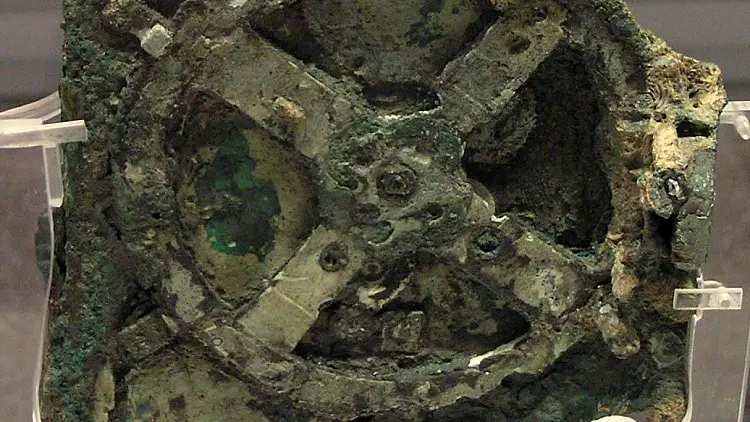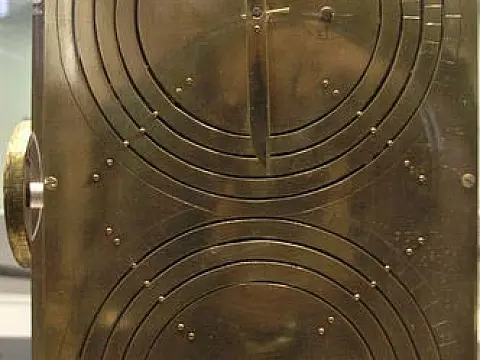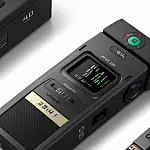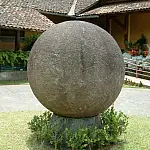Antikythera Mechanism - A 2000 Year Old Ancient ComputerIn 1901 divers working near Antikythera, an island Northwest of Crete found the remains of a clockwork device that is estimated to be around 2,000 years old. Encased in coral and corrosion, its significance and complexity were not understood until decades later.

After over 2,000 years under the sea, the Antikythera Mechanism is corroded and crumbling, its dials and gear wheels stuck together with alluvial deposits. Despite this, we can see from the photographic and x-ray evidence the workings of the device and reconstruct a good idea of the appearance of the original object.
The device resembles a clock; a box with dials on the outside, and lots of gears inside. In its former glory, it would have had the appearance of an 18th-century timepiece. It is widely accepted that this is an ancient mechanical device used for calculating the position of astronomical objects with great accuracy.
This device is just extraordinary, the only thing of its kind. The design is beautiful, the astronomy is exactly right. The way the mechanics are designed just makes your jaw drop. Whoever has done this has done it extremely carefully.Michael Edmunds, Cardiff University
Mystery surrounds the creator of the Antikythera Mechanism, although many believe that the Greek astronomer, mathematician and philosopher Geminus is responsible. He was a resident of Rhodes at the time the device was manufactured, and Rhodes at the time was the centre of astronomical research. Another possible creator is Hipparchus, the ancient astronomer. He was born in what is now Turkey around 190 BCE and also worked and taught primarily on the island of Rhodes. Hipparchus created the first trigonometric table in his attempts to solve problems related to spheres and is therefore known as the father of trigonometry.
Another mystery of the Antikythera Mechanism is the technology involved. It was previously thought that this complexity in clockwork
gears was only achievable in the 18th century. The Antikythera Device shows that the ancient Greeks had no difficulty in constructing mechanisms as complex as epicyclical gears and calculating the ratios necessary for motion. The Antikythera Device consists of at least 30 bronze gears in a wooden container that was only the size of a shoebox.
The original Antikythera device is displayed in the Bronze Collection of the National Archaeological Museum of Athens, accompanied by a reconstruction made and offered to the museum by Derek de Solla Price.
In 2008, The Antikythera Mechanism Research Project, with experts from Britain, Greece and the United States, detected in the word "Olympia" on a bronze dial thought to display the 76-year Callippic cycle, as well as the names of other games in ancient Greece, and probably used to track dates of the ancient Olympic games.
The four sectors of the dial are inscribed with a year number and two Panhellenic Games: the 'crown' games of Isthmia, Olympia, Nemea, and Pythia; and two lesser games: Naa (held at Dodona) and a second game which has not yet been deciphered.
There are other reconstructions of the Antikythera Mechanism which are on display at the American Computer Museum in Bozeman, Montana, the Children's Museum of Manhattan in New York, and in Kassel, Germany.












